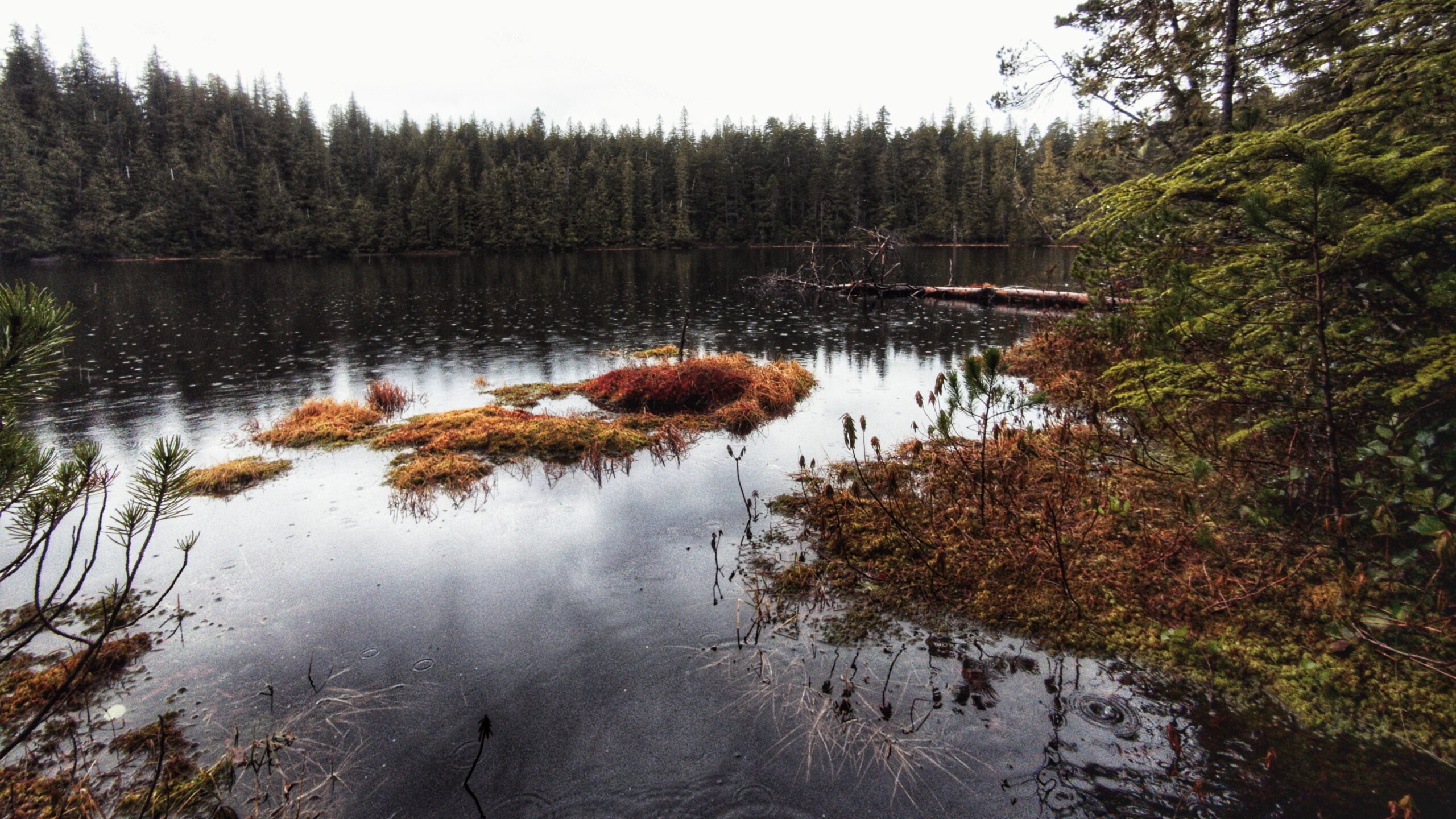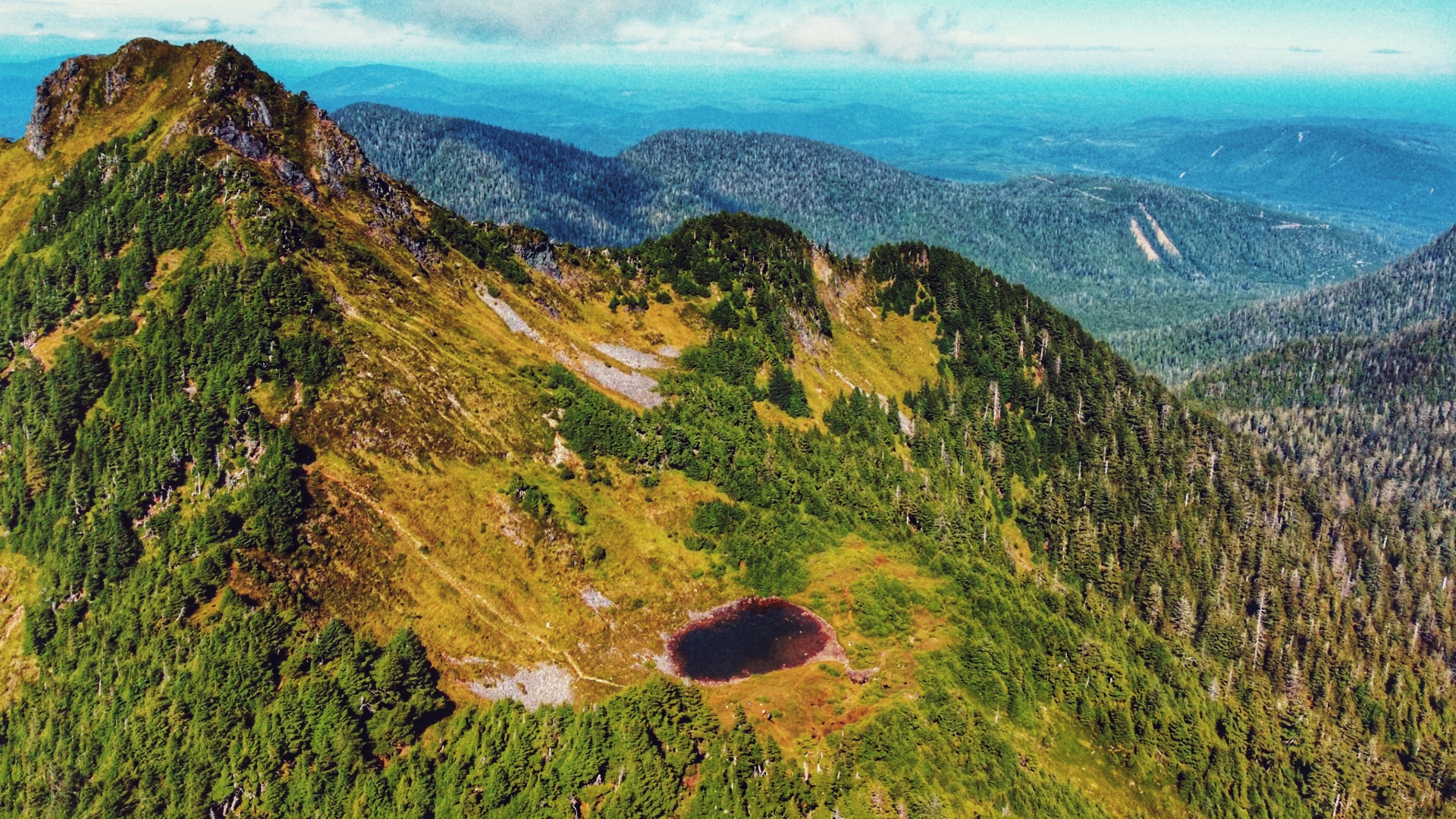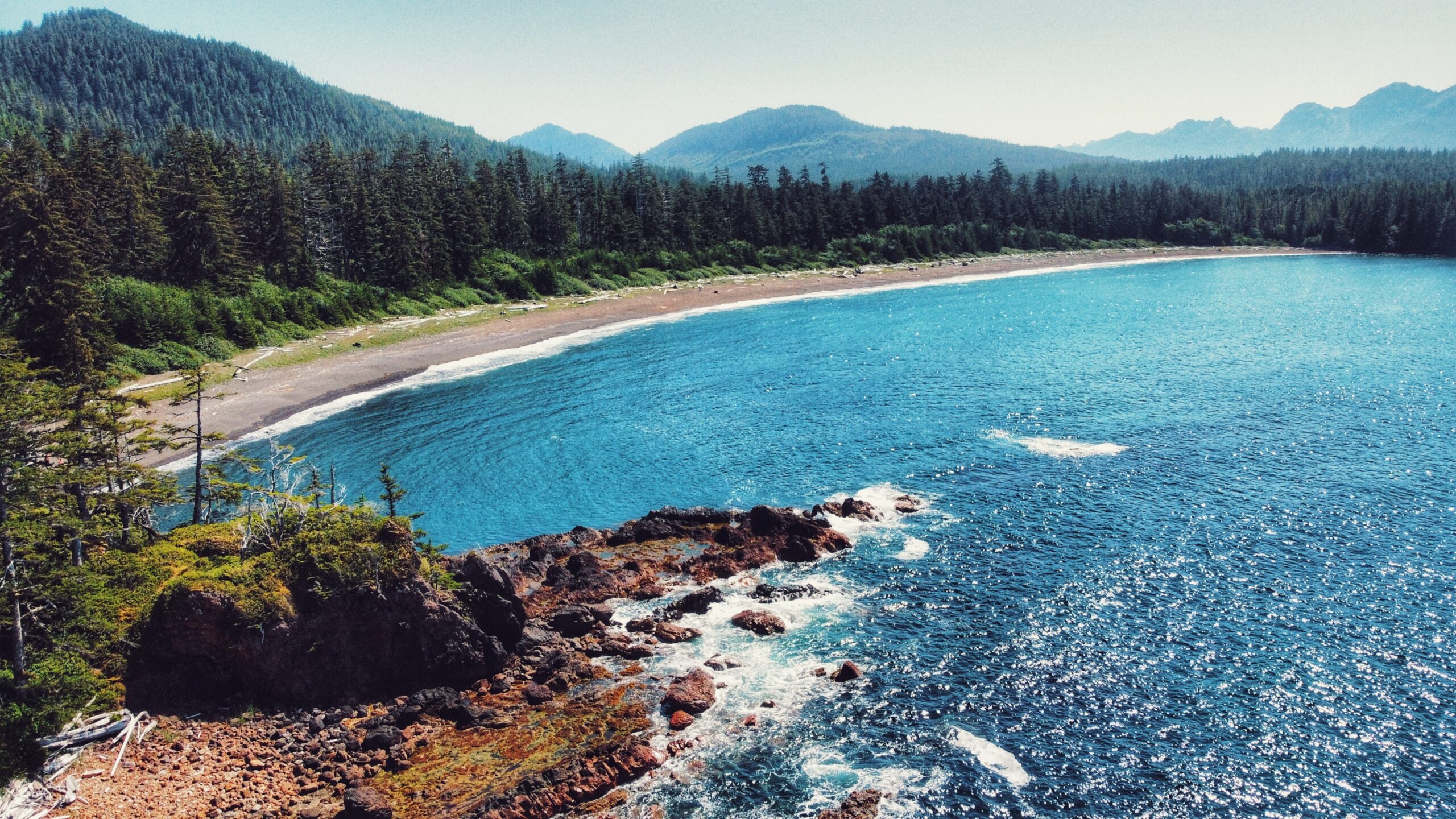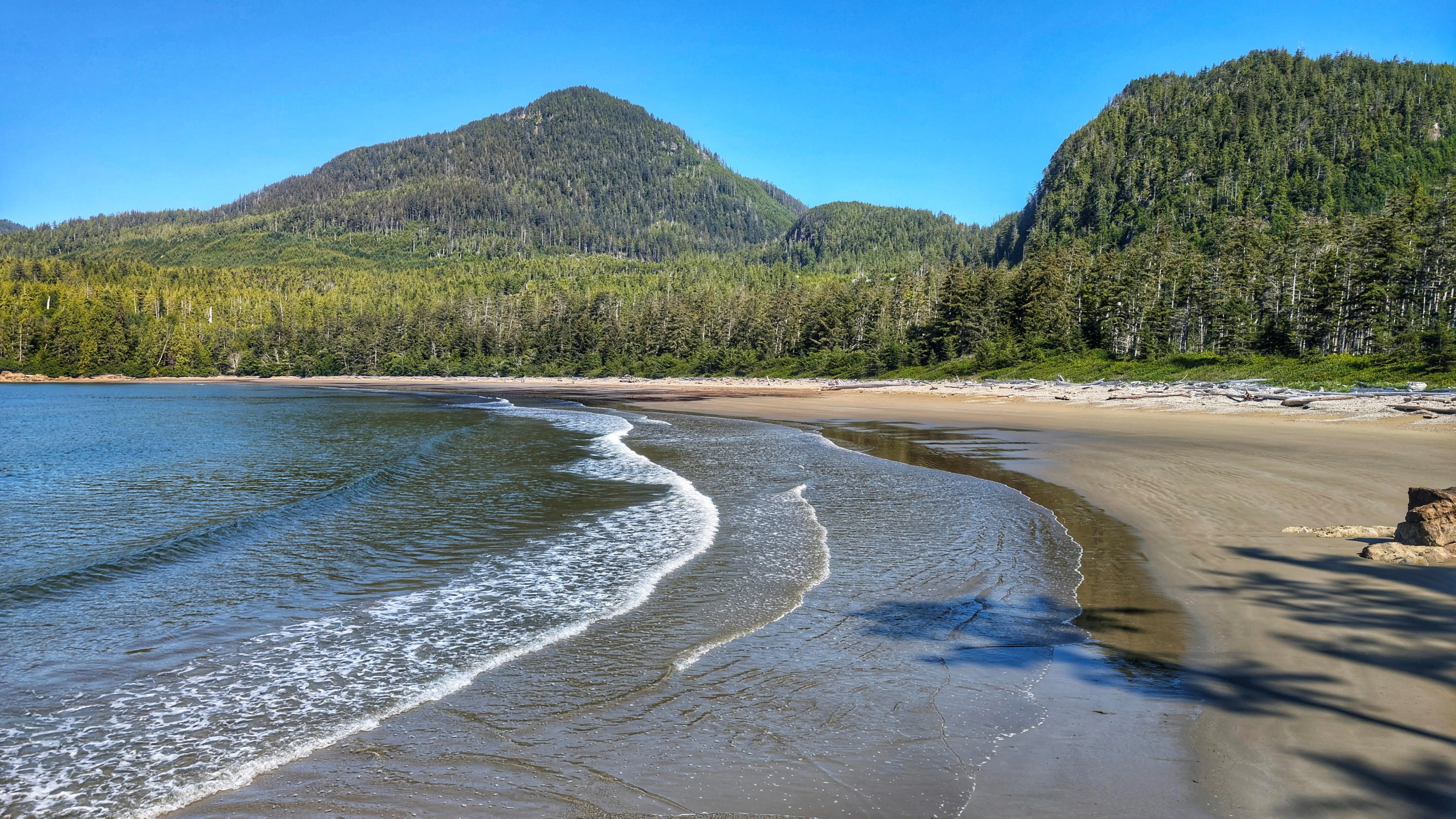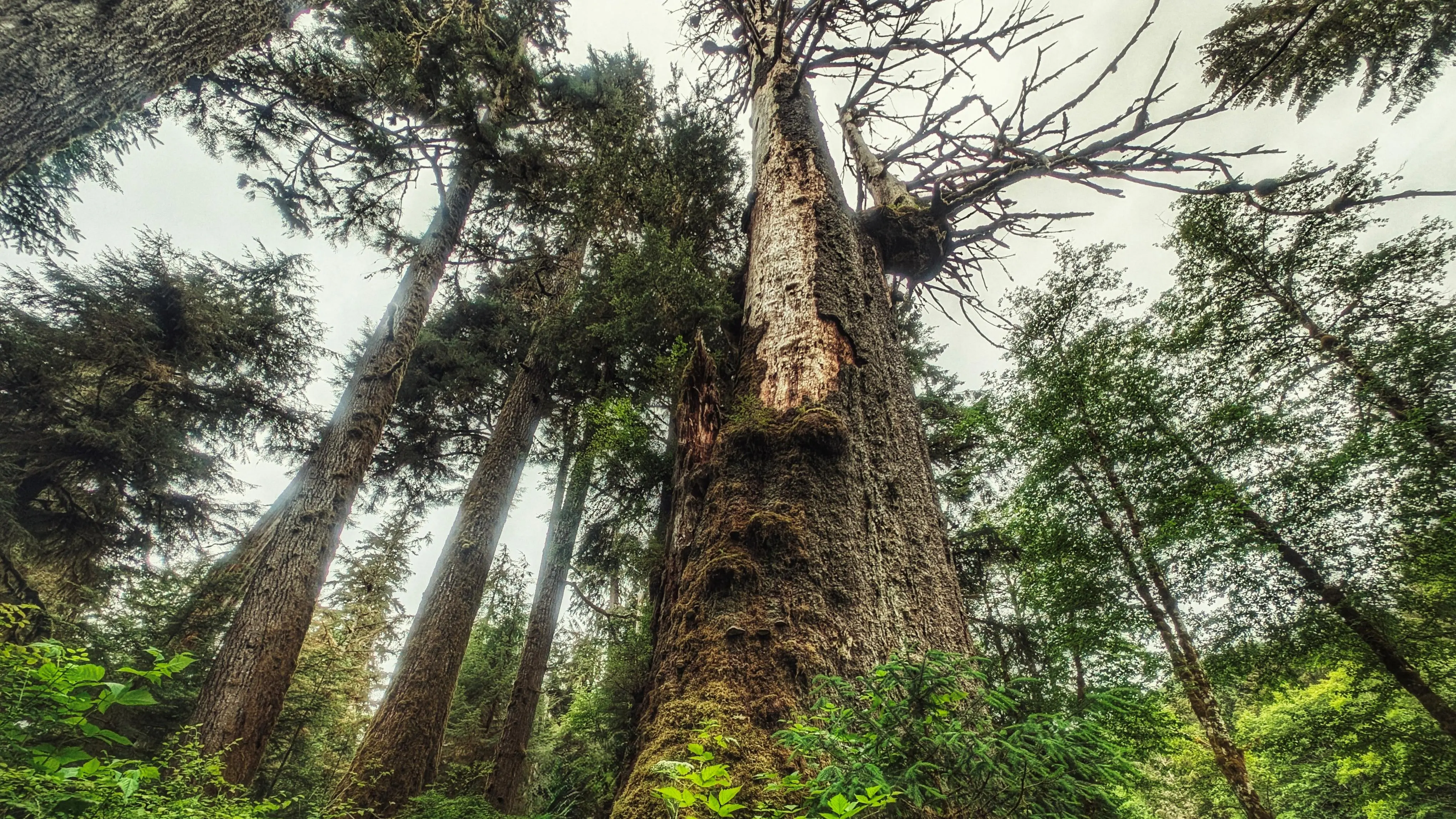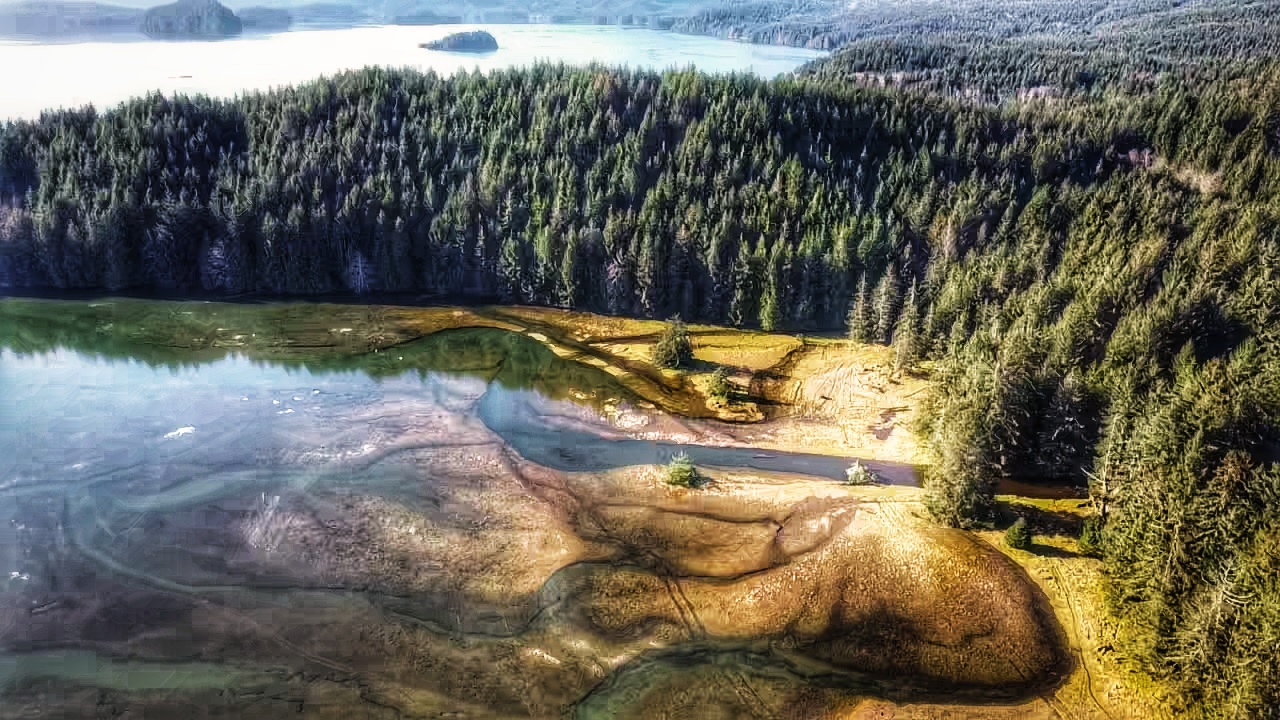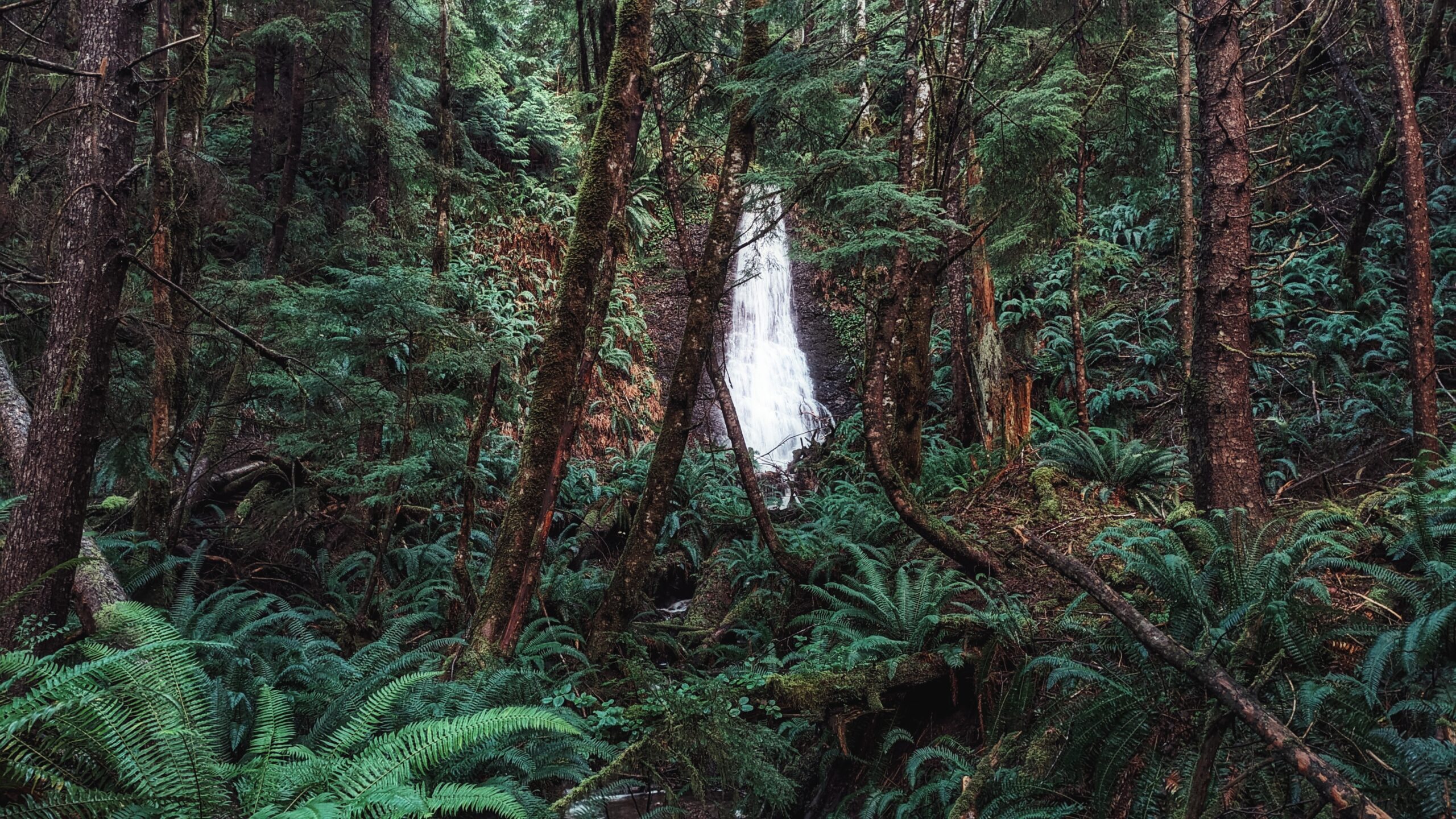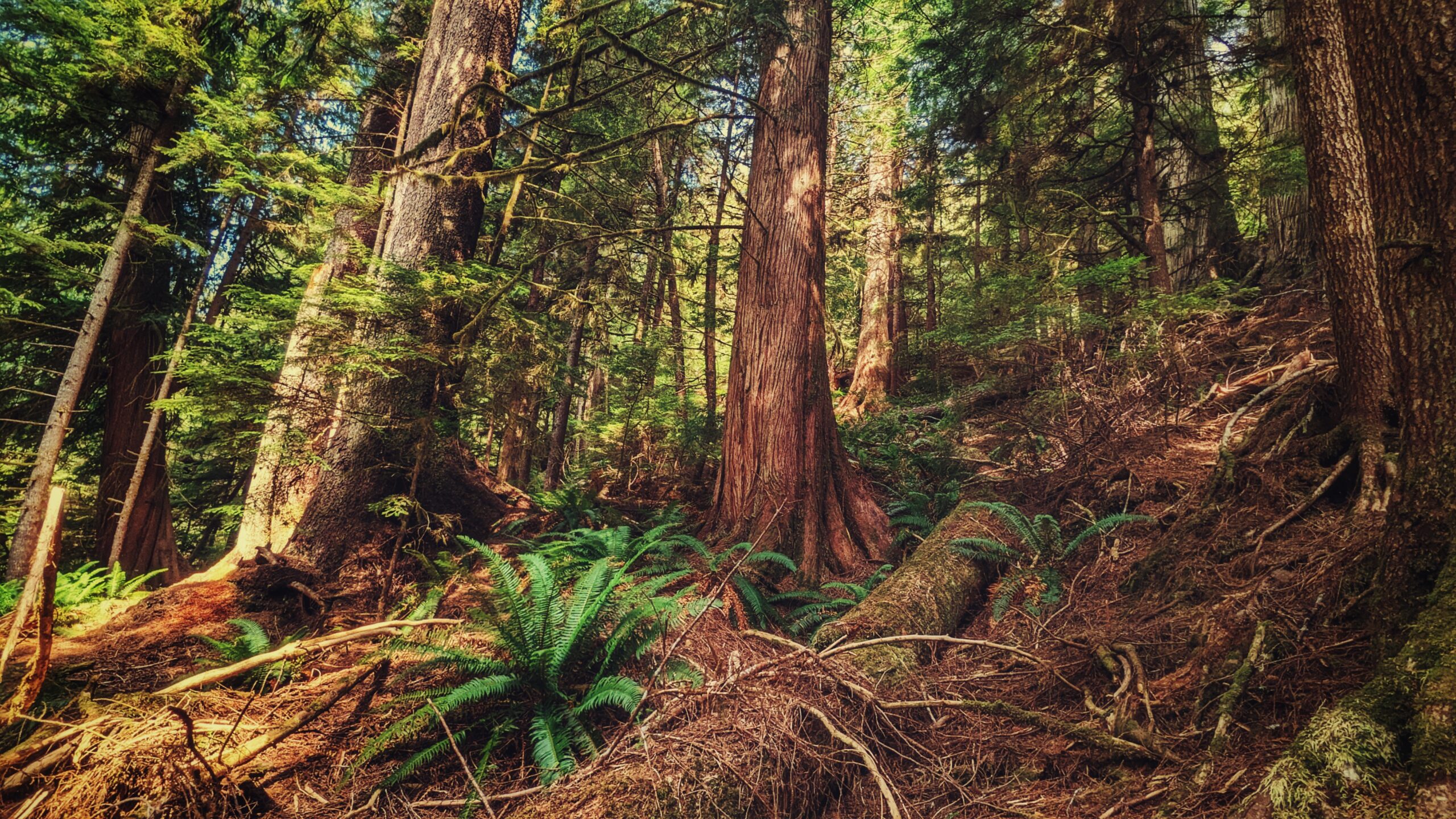The Canoe Lake Trail, also lovingly called “Rat Lake,” is a rough route just outside the southern boundary of the Yaaguun Gandlaay Conservancy. The lake itself is small and characteristic of other bog lakes on Haida Gwaii; however, what makes this trail worth the trek and effort is what can be found around its general parameter: A number of blank/unfinished Haida canoes and culturally modified trees (CMTs)
Category: Feature Spots
In brief, there is no trail on Haida Gwaii called “Sleeping Beauty.” The name “Sleeping Beauty” actually refers to Mount Slatechuck and Mount Raymond – known collectively as the “Sleeping Beauty Trails” because, when viewed from the Village of Daajing Giids, the mountains resemble a woman’s face when laying in repose. What trail, then, are people referring to when they say they’re going to hike Sleeping Beauty?
Located within the Duu Guusd Conservancy, Gregory Beach offers a lovely sand and pebble beach for those wishing to relax and experience the dynamic environment that is Haida Gwaii’s rugged west coast. At the beach’s north end you will find Gregory Creek, which is home to spawning salmon in August and September. The small Gregory Beach campsite is located opposite the creek.
The Riley Creek Trail is the only substantive hiking trail within Rennell Sound where the trail itself functions as the attraction (with the other three, the trails are secondary to the beaches). While not formally maintained, the path is obvious and generally well-marked. When we hiked the route, there were only a couple of spots – just past the mid-way point – where we had to take a moment to locate the trail thanks to blowdown.
The trail to Bonanza Beach is brief @ only 400 meters one-way. As you hike towards the beach, you will be treated to second-growth forest, giant spruce burls, dense salal, and some beautiful old growth cedars as you approach the beach. It should take less than ten minutes for one to reach one of Haida Gwaii’s crown jewels: Bonanza Beach.
As noted, this is not a formal trail of the Yakoun Old Growth Sitka Spruce Grove; however, you should see a vague path once you cross the river. It will lead you to an old de-activated road. The grove of old growth Spruce is facing the river. Take your time and explore these monumental trees. You will feel dwarfed in their presence, but this is forest therapy in the best sense of that term! Use caution as it is often difficult to see where you are stepping.
Be prepared for six rope sections. Most of these are short, and designed to help you over minor obstacles, but the final two – just before you reach the zenith – are essential in helping you reach the viewpoint safely. Once at the top, follow the narrow trail to a couple of viewpoints of the Tarundl Flats and bays down below. Please use caution while you are here as there are no ropes in place as a safety measure.
There are no notable landmarks to help identify where the trailhead is. If you’re not already looking for it, chances are you’ll drive right on by. Once you park safely off the side of the road, you should spy two alder trees behind a group of feisty ferns. One of the trees features a double white diamond marking with some yellow tape attached to the lower diamond. Welcome to the Moresby Waterfall trailhead!
We parked our vehicle on the shoulder at Gold Creek Bridge and started hiking on the west (LEFT) side of the creek. As noted above, the trail is informal and sans marker, but all you have to do is follow the creek until you reach the south end of Mayer Lake. The area around the creek is delicate muskeg, so a good pair of boots or waterproof shoes is recommended.
As was noted above, the Dempsey Collinson Memorial Trail is located a few feet behind the western Crabapple Creek trail marker, near the old M&B site. Just a few feet in, you will spy the rusted remains of an old “diesel donkey” hidden behind some bushes to your RIGHT. After a couple of minutes, you’ll come upon the first of many minor rope sections of the hike – this one bringing you down to Crabapple Creek. Cross the creek and continue hiking north.

